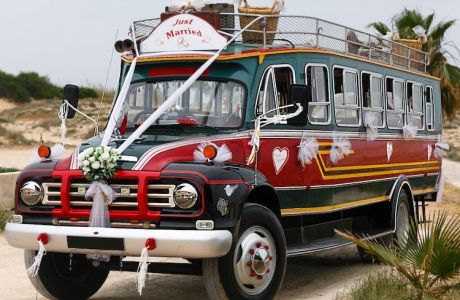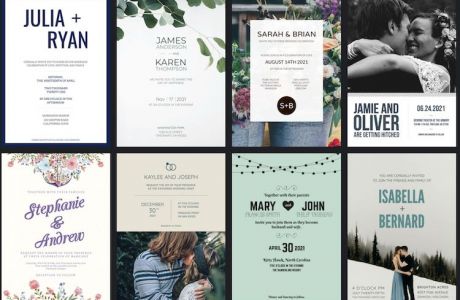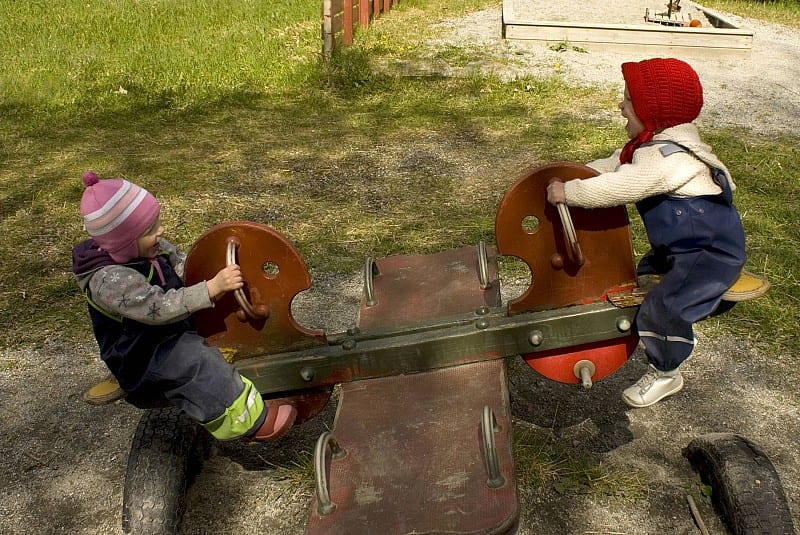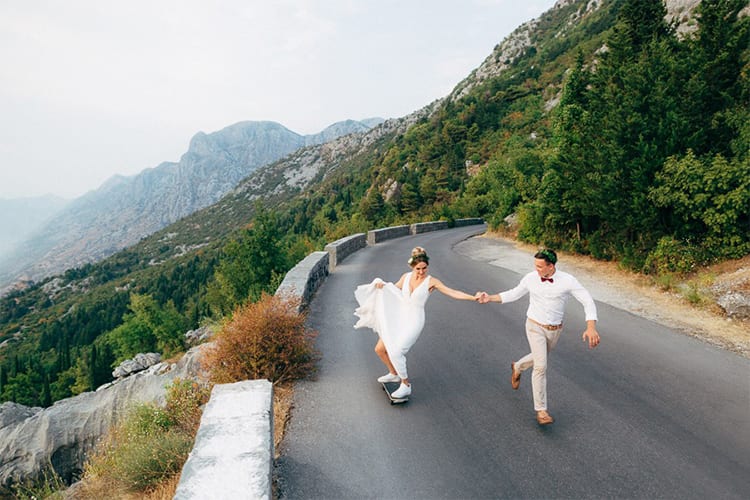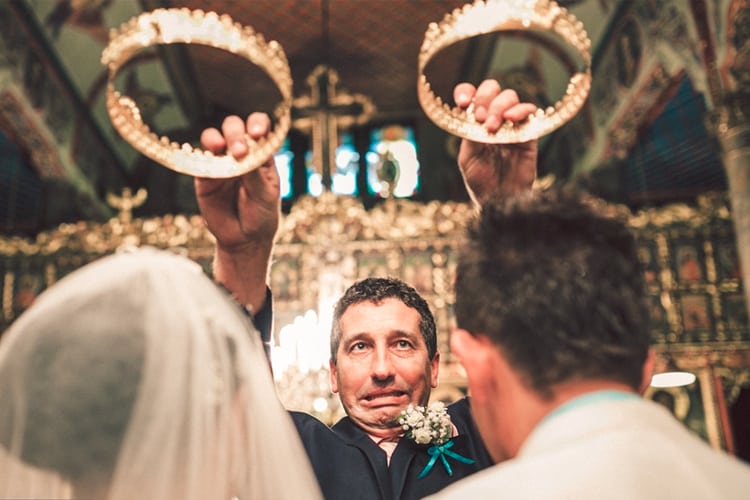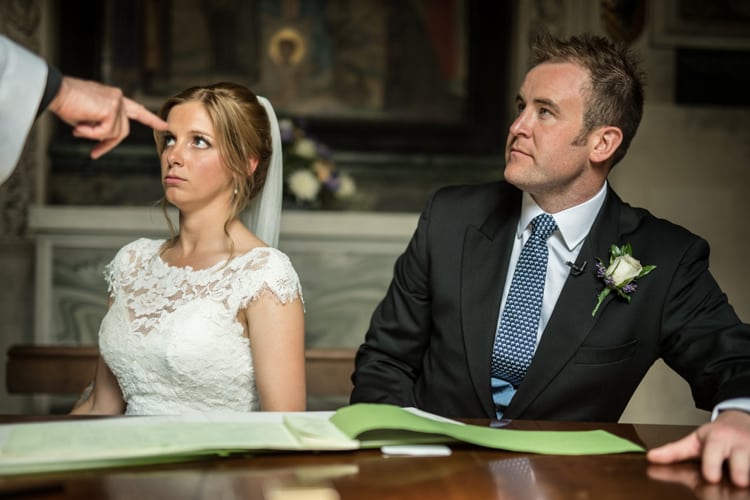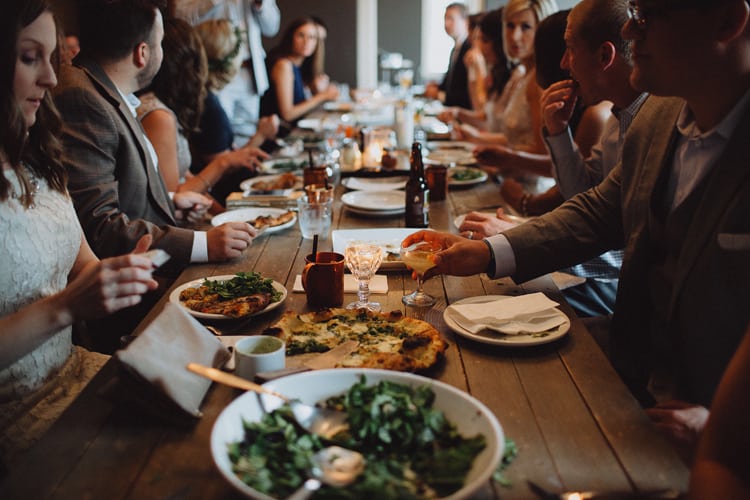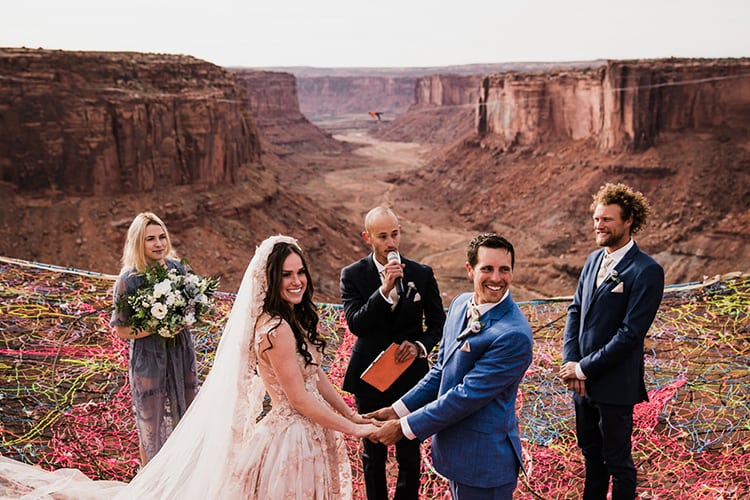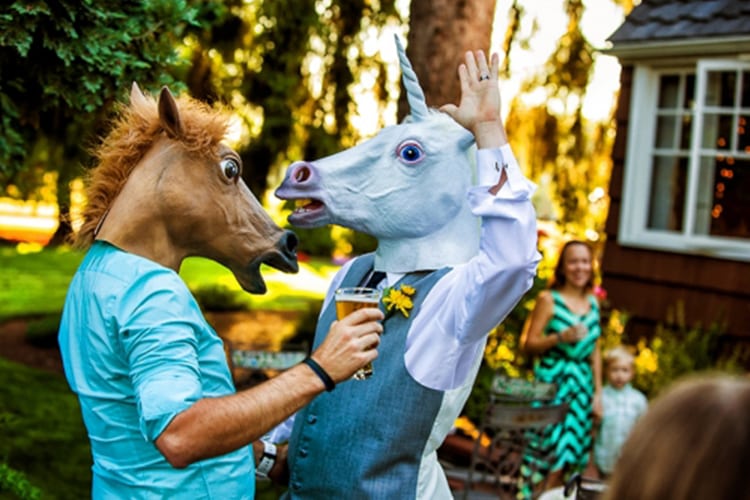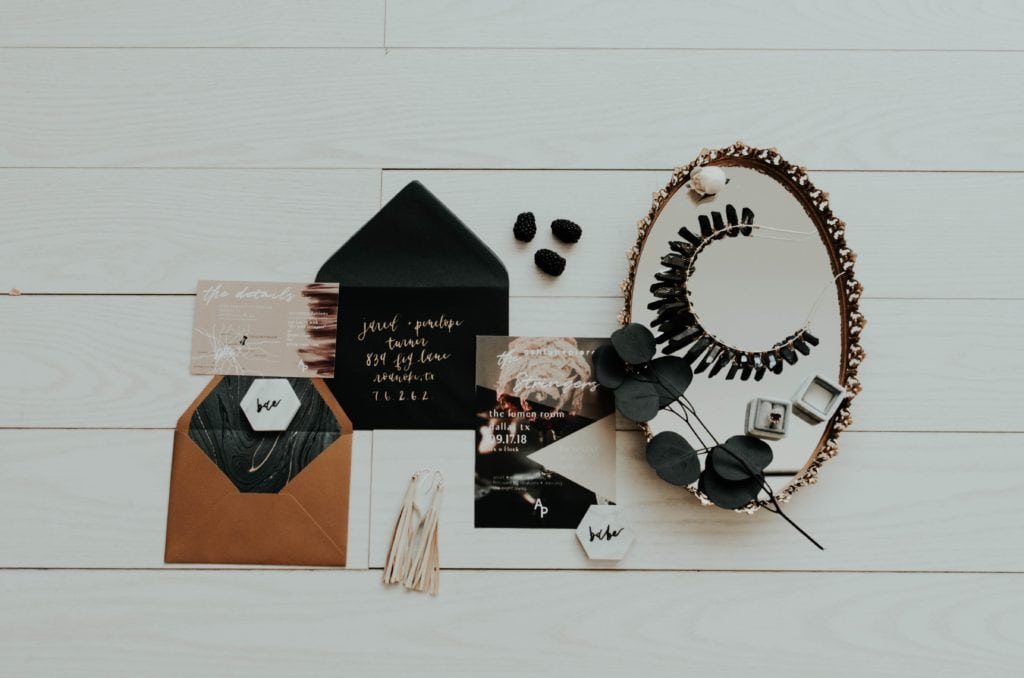
You did it. You got engaged. You’re getting married. You’ve chosen a location and a date and decided who will be invited. Now you’ve got to figure out the best way to invite them—which means coming up with the right wedding invite wording. Here, you have absolutely no idea where to start (impatient grooms can skip straight to our 10 templates).
Fear not. As you have already discovered, most things wedding-related involve time-tested traditions and templates borne out of an attention to detail and proper etiquette (and the need to impress your guests with your font choices). Whether you want to follow one of those templates or break the mold—as a testament to your spirit as a couple, of course—is entirely up to you. The basic information you need to convey is below (and there’s an explanatory section for each farther down in the article):
Who: Who is extending this invitation?
What: What are they inviting people too? (hint: a wedding)
Who (again): The names of the people getting married
When: The date and time of the wedding
Where: The location of the ceremony
(Optional)
More What and Where: The location and time of the wedding reception
What to Wear: See our guide to dress codes
Finally, most formal invitations will include a separate RSVP card. Yours should too. You can learn all about RSVP etiquette here. If you’re going casual you can include RSVP info (such as an email address, phone number or website) on the invitation itself.
So how does the above template play out on an actual invitation? A lot of that depends on you and the circumstances of your wedding. The biggest variable a couple will encounter in terms of the invitation is the question of who is actually hosting the wedding. Let’s start there.
Who’s Sending the Invitation?
Generally there are only a few answers to this question, and the answer boils down to this: Who’s paying? Common answers include: the two of you; her parents; your parents; all of you; a rich and eccentric uncle.
That said, the most common circumstances for invitations are that either her parents are hosting or the two of you are. No matter the case, this first line should state the name(s) of the host(s). Writing out full names here is the most formal (and common), and also tend to follow a somewhat old-fashioned “Mr. & Mrs. Full Name Of The Dad” format, but it’s your wedding.
Want to include the full names of both your parents even if yours aren’t hosting? Go for it (do it underneath the groom’s name for the groom, or before the bride’s name for the bride).
Is one of your parents deceased? You can still include them on the invitation if that’s your choice—simply add “the late” in front of the name.
Are you both adult children of divorce whose parents have all remarried so you effectively have four sets of potential hosts? Mazel tov. You can add all four couples names if you want, in whatever order makes sense to you based on who is hosting (although in this case it might be easiest to host it yourself, given the potential for battles over who deserves the most credit).
Is there a doctor in the house? Formal titles beyond “Mr.” or “Mrs.” should be used when appropriate, while still traditionally placing the male’s name first (“Dr. and Mrs. David Martin Joyce” or “Mr. Peter Andrew and Dr. Alaina Organa White”). The point is, it’s your invitation: Write whatever you like, even if it’s just the first names of the couple in question. Just make sure you spell the names correctly.
What Are You Inviting Them To?
On this line you let people know the great news: they’re invited to a wedding.
How you phrase it is again up to you and in some ways is tied to who the host. If parents are hosting, common verbiage includes:
“_________ request the honor of your presence at the marriage of their daughter/children…”
or
“_________ invite you to the wedding of their daughter/children…”
or
“_________ are pleased to invite you to witness the union of their daughter/children…”
and so on.
If the couple is hosting, then their names will have already appeared on line 1. As such, the second line should announce the two of you are getting married, which can be styled in any variation of the following you choose:
“_________ are pleased to invite you to their nuptials”
“_________ would love you to join them on the occasion of their wedding”
“_________ are tying the knot”
“_________ are thrilled to invite you to their commitment ceremony”
“_________ are signing a legally binding document and they’d love you to be there as a witness.”
No matter who the hosts are, this line is meant to be a declaration—a statement of what’s going to transpire between you and your betrothed.
If you want to play it casual, you absolutely should. If your instinct is to go for a more upscale, formal feel, follow your gut. If your wedding is taking place in a Christian house of worship, it’s traditional to request “the honour” of your guests’ presence, spelling the word honor the way the Brits would. In the event that you are including a traditional Roman Catholic Mass as part of your wedding, consider adding some version of “your participation in the offering of a nuptial mass” beneath the groom’s name.
In that same vein, if there are traditional elements of your wedding ceremony that you’d like to call attention to, you’re well within your rights. If you want to include a poem or a prayer or a funny limerick you wrote (provided it’s within the bounds of good taste as dictated by, say, your grandmother), you can—and you can place it on the invitation either before or after the names of the host. Some invitations even end with a simple prayer. This portion is one of the few opportunities to personalize your invitation beyond just putting your name on it, so act accordingly.
Note: If you are hosting your own wedding, you can skip Part 3 and move straight to Part 4.
Who’s Getting Married?
On this line, you simply present the names of the individuals who are getting married. The bride’s name should come first, and her last name is traditionally left off if it’s the same as that of the host(s). In the event there’s no bride, the name of the gentleman who is most closely tied to the host of the wedding (either because he is the son of the host or because he is the host) should come first. If that person is both of you, go for alphabetical order by last name or, alternatively, maybe flip for it? In any event, full names are appropriate for formal invitations (with Miss for the bride and Mr. for the groom), but if you’d prefer first and last names or first names only, that decision is yours to make.
When Is The Wedding?
People can’t come to the wedding if they don’t know when it is. And because you want them to attend (or at least are sending an invite because you want them to think you want them to attend), give them a date and a start time.
As we saw with the bride and groom’s names, formal invitations tend to feature the longest versions of everything, while informal invitations excluding unnecessary details. For an informal invite, you don’t have to write “o’clock” or “in the evening,” as those terms are implied by the time.
Consider using “after” as opposed to “past” when referring to times that are off the hour. A formal example might look something like this:
On Saturday the seventeenth of November, two thousand and eighteen
at half after five
Or, for a slightly less formal but still fancy interpretation, you can use “past” if you so desire:
ON FRIDAY THE FIFTH OF APRIL, TWO THOUSAND NINETEEN
AT A QUARTER PAST SIX IN THE EVENING
As with the rest of the invite, you can scale back on the formality by adding numbers and abbreviating anything you choose, which could leave your final presentation looking like some version of the following:
On Saturday, March 23, 2019, at seven o’clock in the evening
And if you want to imply to your male guests that flip flops are appropriate for your wedding, you can even go with something as succinct as:
6/22/19 @ 4 p.m.
Where Is The Wedding?
Hopefully you know the answer to this question. Start with the formal name of the location at which you’re getting hitched and, if you so choose in the age of GoogleMaps, follow that up with its address or at the least the city in which it’s located. The only way you can screw this up is if you print the venue name or address wrong, so be sure to double check it. If you choose to skip the address of the venue, ensure it’s the only one within the city limits—believe it or not, there might be more than one “First Baptist Church.”
(Optional) Where’s The Party?
If you so choose, you can include details for the reception on your invitation, although most modern formal invitations leave this information vague, fleshing it out on an insert or as part of the wedding website. Your reception may be taking place at the same venue you held your ceremony, and in this case nodding to the reception is as simple as saying “Reception to follow”; “Dinner and dancing to follow”; or “Celebratory shenanigans immediately after.”
The same language applies if the reception is taking place at a venue that’s different from the place where your nuptials are going down, but you may also consider including the name of the location as well as its address. Some opt for including this information on the wedding program as opposed to the invitation, perhaps in an effort to ensure that individuals who are invited actually attend the wedding and not just the party being thrown afterward.
(Optional) What To Wear?
If you are enforcing, or at least suggesting, a dress code for your wedding (and we suggest that you should) it’s typically the last element you need to include on your invites. Traditionally, etiquette dictates that formal invitations forgo a dress code, as telling someone what to wear is a way of implying they don’t know what to wear to a wedding, which is considered rude. In that sense, your invitation should imply the dress code—meaning if your invite is full-blown formal, it’s assumed your wedding will be as well. Likewise, if your invites feel a little more laid back, your guests should feel comfortable in more relaxed (but still wedding-appropriate) attire.
But because “wedding appropriate” means different things to different people, the best way to let them know if you have something specific in mind is to state it outright.
If you’re going the extra formal route, you can suggest a dress code on a RSVP response card or through another forum such as a wedding website, but if your invitations are more casual, it’s absolutely permissible to include that info on the invite itself. Whatever you decide, you should know what you’re telling people if you use any of the terms below:
- “Black tie” means you want your guests in tuxes and formal gowns.
- “Black tie, optional” means formal but with room for individual expression (and leeway for gents who don’t own a tux).
- “Semi-formal” means suits and ties for the guys and dresses for women
- “Cocktail attire” implies shorter dresses and/or skirts for women and jackets for men.
You can also suggest a dress code with less strict interpretations, with lines like “Beach party attire” or “Dress to impress” or even “Come as you are”. Nudists getting hitched at their local colony should offer a permissive “Clothing optional,” if only to forgive those who would feel more comfortable in a pair of slacks. A dress code helps your guests figure out what to wear, and tells then what to expect for the evening overall. The higher your expectations, the more imperative it is for you to lay them out clearly. Just as no one would want to show up in a Hawaiian shirt and cargo shorts to your Gatsby-inspired soiree, they would likewise feel out of place in a tux if everyone is barefoot and rocking “Country-fried-chic” duds. For a deeper dive on dress codes, check out this handy breakdown.
10 Wedding Invitation Examples
Now that you have a clear sense of all the parts in an invitation, here are a few examples you can play with in order to create your own.
Formal Wedding, Hosted by Bride’s Parents
Mr. & Mrs. Harry James Fontana
request the honor of your presence
at the wedding of their daughter
Miss Julia Anne
to
Mr. Carter Maxwell McGee
son of Mr. & Mrs. Cameron Powers McGee
The seventeenth of May, two thousand nineteen
at four o’clock
The Sunset Club
Denver, Colorado
Dinner & dancing to follow
Casual Wedding, Hosted by the Couple
Rachel & Zach
are getting married
October 19th, 2019
Half past eight o’clock in the evening
at the
Buena Vista Social Club
Drinks. Dancing. Shenanigans. And more to follow.
Dress to impress
Fun Wedding, Hosted by Couple
Andre + Rachel
Are Finally Tying the Knot!
(we know…we know…we’re excited too)
December 2, 2018 | 5:30pm
The Orange Peel
Asheville, NC
Music to follow + dancing required + guys wear ties
Semi-formal Wedding, Hosted by the Couple and Their Families
Together with their families
Stephanie Elizabeth Hayes
and
Grant Avery Ayers, III
Would be thrilled for you to attend the occasion of their wedding
Friday the Twelfth of September, Two Thousand Fifteen
At two o’clock in the afternoon
The Overlook Hotel
Mount Hood, Oregon
Casual Wedding, Hosted by the Bride’s Mother and Stepfather
Dr. Vincent and Mrs. Amelia Price
are delighted to invite you to the wedding of her daughter
Penelope Jean Clarke
to
Harlon Blake Raffini
06.06.19 | 4 p.m.
Old Main Building | Wofford College
Spartanburg, SC
Reception immediately after | Garden party attire
Destination Wedding, Hosted by the Groom’s Parents
Love is in the air, and bags are at the airport!
Mr. and Mrs. Jarvis Nathaniel Drake
Would love you to join them in celebrating the
marriage of
Suzannah Keane Smolders
to their son
Patrick Allan Drake
Saturday, the twenty-fifth of August
Two thousand eighteen
at three o’clock in the afternoon
Sandals Resort | Cancun, Mexico
Christian Wedding, Hosted by Parents of the Bride and Groom
Rev. and Mrs. Martin Phillip Oliver
and Mr. and Mrs. Jack Harrison Ryan
Request the honour of your presence
at the wedding of their children
Amy and Clayton
05.27.19 | 3 p.m.
John’s Street United Methodist Church
Newport, Rhode Island
Reception to Follow
Semi-casual Jewish Wedding, Hosted by the Couple
Meet us under the Chuppah!
Ruth and David
invite you to share in the joy of the occasion of their marriage
Sunday, February 6, 2019
at half past three o’clock in the afternoon
Kanner Hall, 7269 Beverly Boulevard
Los Angeles, California
Celebration to Follow
Muslim Wedding, Hosted by the Couple and Their Parents
Each hour, each day, each year
We grow as two, yet as one,
We grow apart, yet together
Forming an eternal love
We,
Aisha Rida Azlan
And
Zayan Umair Khan
Together with our parents
Request your benign presence and blessings on the auspicious occasion of our Nikah ceremony
~
Saturday the third of May, at four o’clock in the afternoon
Islamic Society of Kansas, Kansas City, MO
~
Reception to Follow
The Brass on Baltimore, Kansas City, MO
Cocktail Attire
Hindu Wedding, Hosted by the Bride’s Parents
= Shree Ganeshay Namah =
Dr. and Mrs. Panav and Padma Dewan
Humbly request the honor of your presence
at the marriage of their daughter
Miss Asha Maryam
to
Mr. Jason Devansh Gupta
Saturday August the eighteenth, two thousand and twenty
at a quarter past five
The Grand Lawn at the St. Regis Hotel
Deer Valley, Utah
Celebration to Follow
Semi-Formal / Indian Formal
There are a lot of different options for how you word your wedding invites. Just make sure whichever way you choose reflects the tone you want for the event. And proofread. Always proofread.



